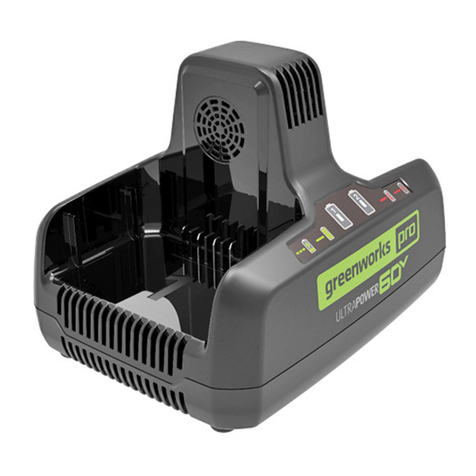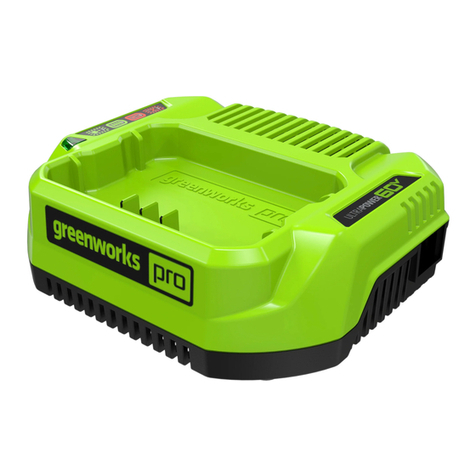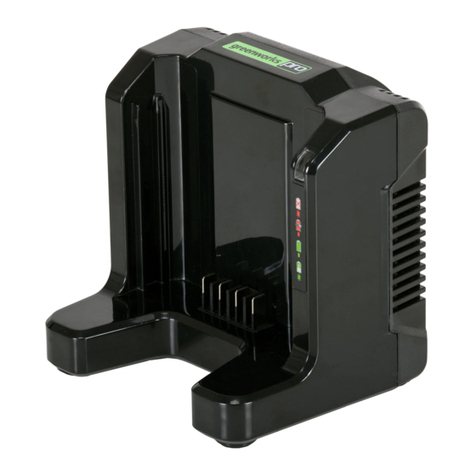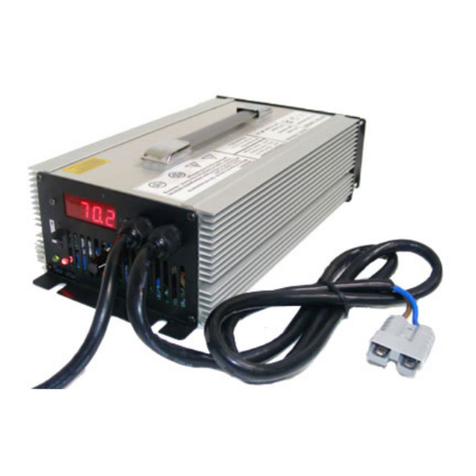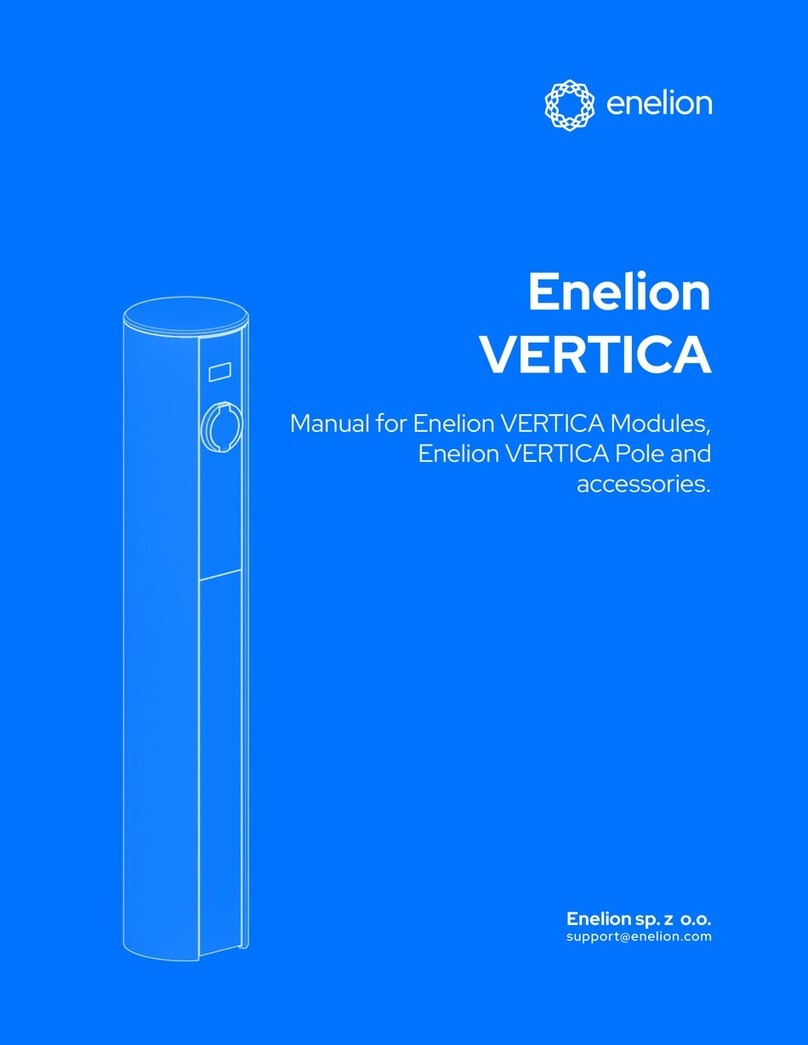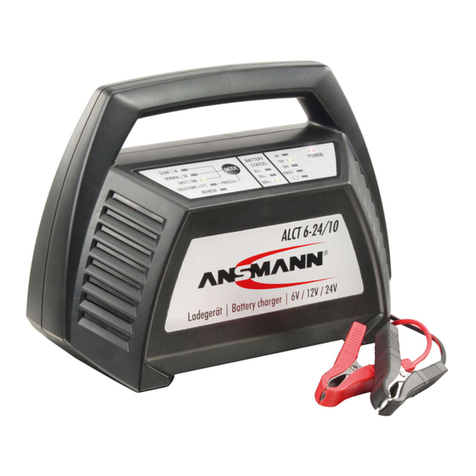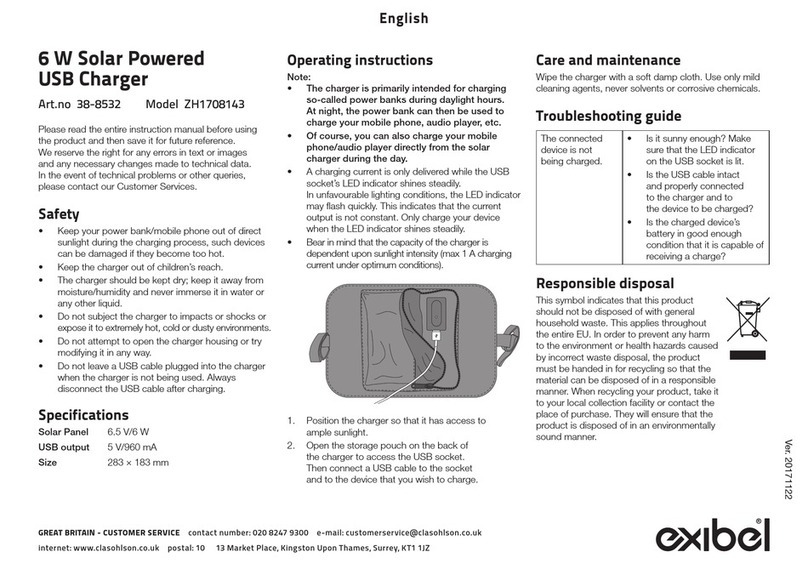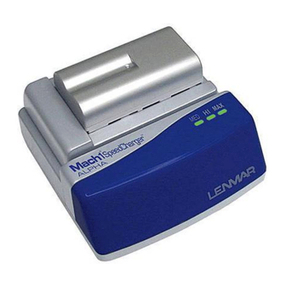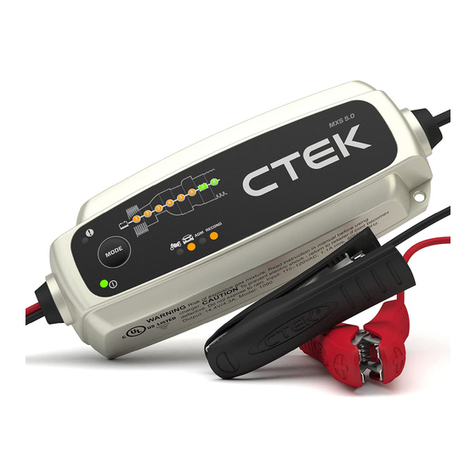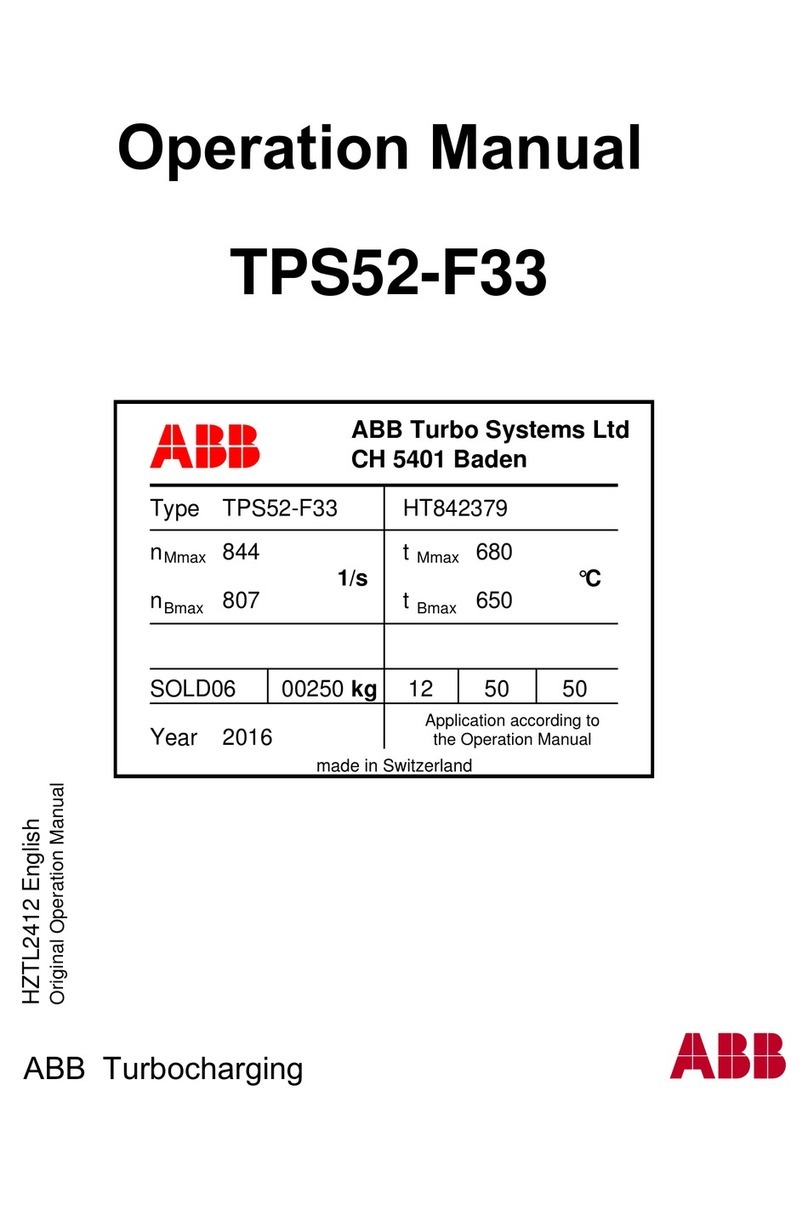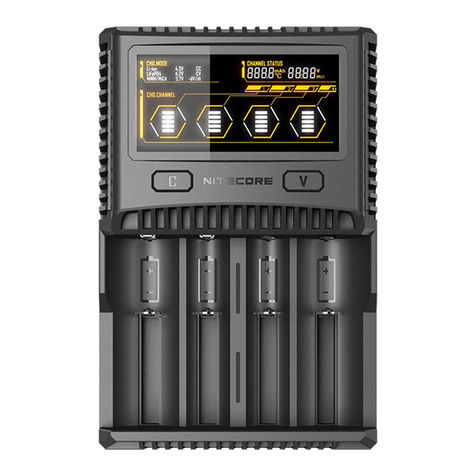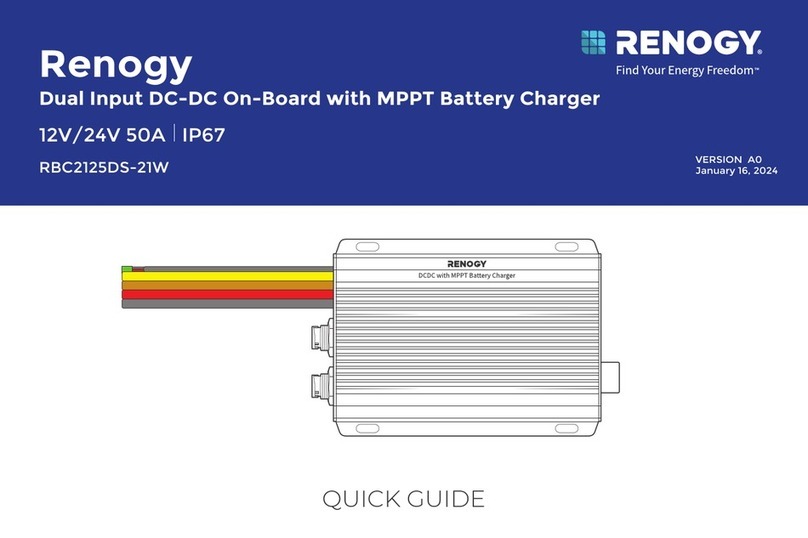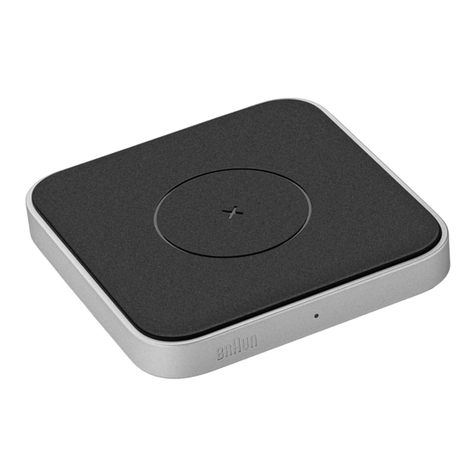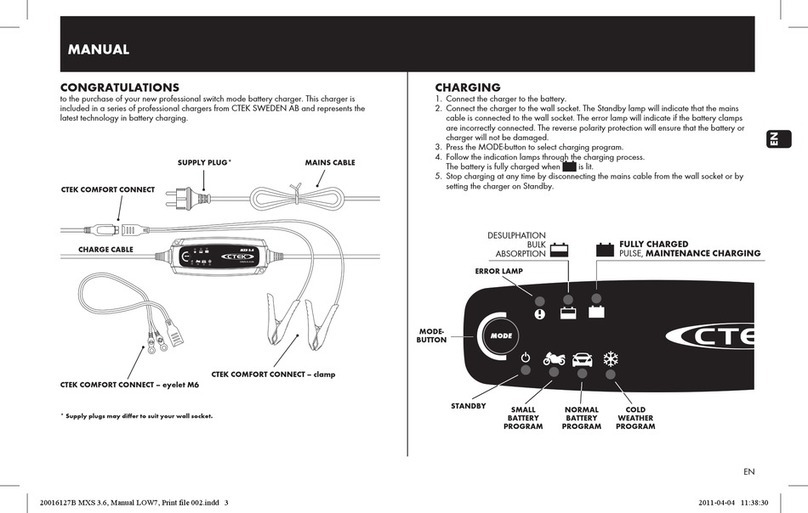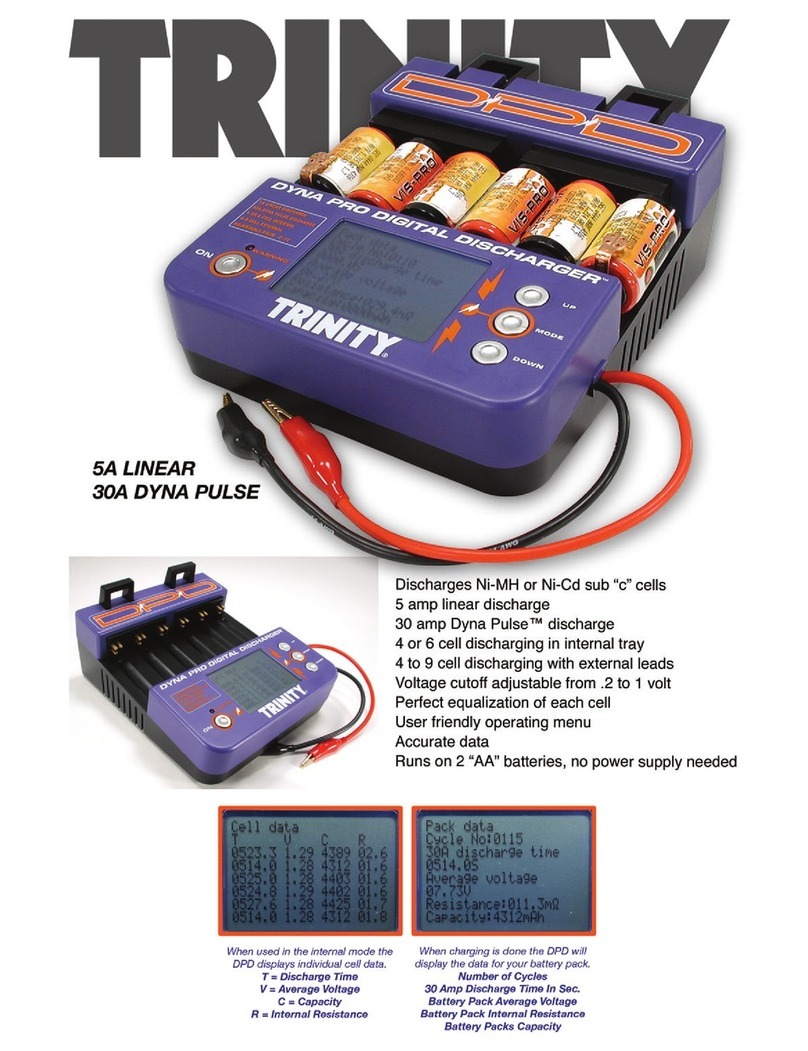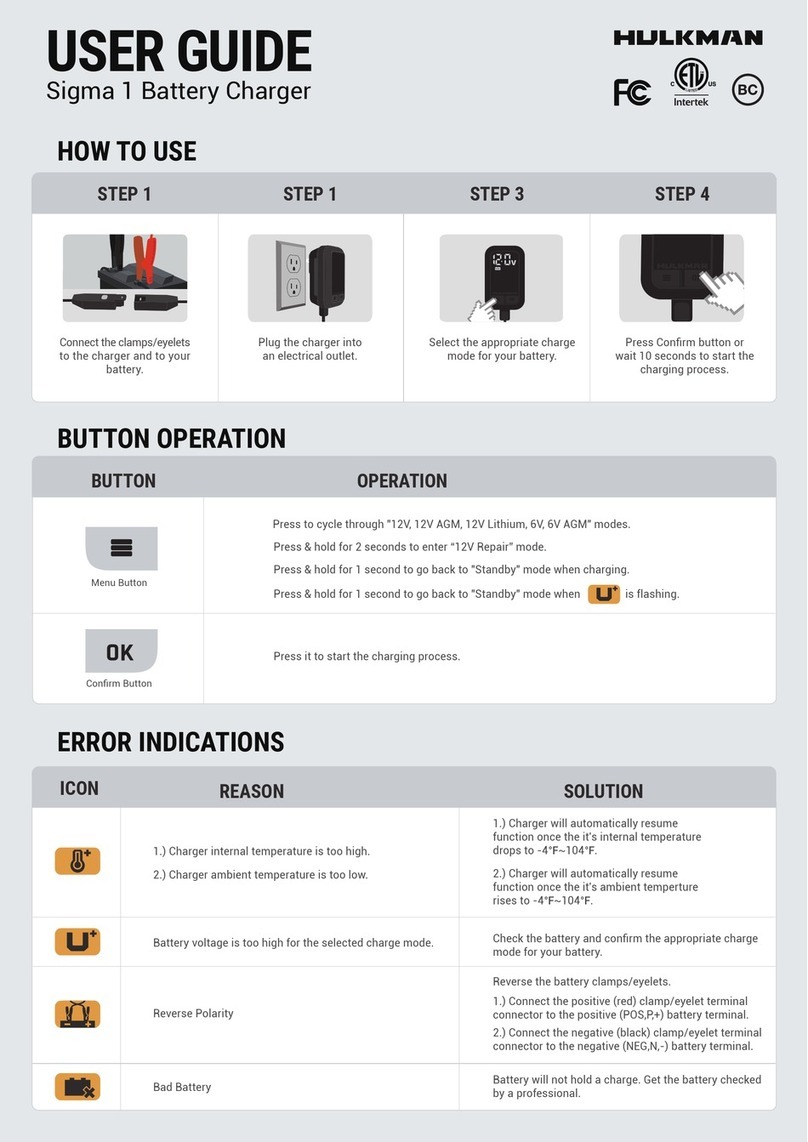
1 IMPORTANT
SAFETY
INSTRUCTIONS
• SAVE THESE INSTRUCTIONS.
• DANGER: TO REDUCE RISK
OF FIRE OR ELECTRICAL
SHOCK CAREFULLY OBEY
THESE INSTRUCTIONS.
• Confirm the voltage available
at each country location before
using the charger.
• If the shape of the plug does
not fit the power outlet, use
an attachment plug adaptor of
the proper configuration for the
power outlet.
• DO NOT probe the charger with
conductive materials.
• DO NOT allow liquid inside the
charger.
• DO NOT try to use the charger
for any other purpose than what
is presented in this manual.
• Unplug the charger and remove
the battery pack before cleaning.
• Do not try to connect two
chargers together.
• Do not use the charger in the
circumstances that the output
polarity does not match the load
polarity.
• For indoor use only.
• The cover may under no
circumstances be opened. If the
cover is damaged, the charger
may no longer be used.
• Do not attempt to recharge non-
rechargeable batteries.
• SAVE THESE INSTRUCTIONS
– This manual contains
important safety and operating
instructions for battery charger
Models CAB801/ 2901402/
GCH8020/ CAB812/ CAB813.
• Before using battery charger,
read all instructions and
cautionary markings on battery
charger, battery, and product
using battery.
• CAUTION – To reduce risk
of injury, use only BAB703
or Greenworks 80V series
approved replacement batteries.
Other types of batteries may
burst causing personal injury
and damage.
WARNING
To avoid risk of fire, electrical
shock, or electrocution:
• Do not use a damp cloth or
detergent on the battery or
battery charger.
• Always remove the battery
pack before cleaning,
inspecting, or performing any
maintenance on the tool.
4
English
EN
